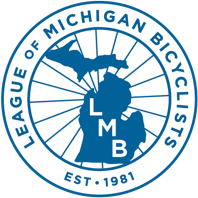 May 13, 2022
May 13, 2022
In a cyclist’s ideal world, getting on a bicycle is completely risk-free. All vehicles coexist perfectly — there is no chance of a bump, crash, or fatality. Drivers are at all times aware of their surroundings, know exactly where and when to look for a cyclist, and have excellent cyclist-driver etiquette. Complete on-road harmony!
If only. But new technologies promise to bring us closer to this transportation utopia. Beaconization is a term for equipping bicyclists, cars, and pedestrians with location technology to communicate and avoid crashes. These transponder beacons can be spotted automatically by sensor-equipped cars, immediately alerting drivers when a cyclist or pedestrian is approaching. Companies like Tome, Ford, GM, and Uber have spent the last several years developing this Bicycle to Vehicle (B2V) technology, promising safer roads for all through sensors, wireless messages, and automotive inputs.
“We are currently working on evaluating wireless safety messages that are sent from a vulnerable road user (VRU), such as a cyclist, pedestrian, or scooterist, to a vehicle,” Angela Fessler, director of engineering at Tome Software, said. “These messages contain information such as speed, GPS location acceleration, and heading. The vehicle’s safety system can use this message to determine the position
of the VRU and take an appropriate safety action or provide a warning to the driver.”
In Nov. 2021, the U.S. passed the Bipartisan Infrastructure Law (BIL), which includes funds for Vehicle to Everything (V2X) technology. In the last few years, many pieces of “road furniture” (including posts, poles, and signs) across the country have been chipped with transponders that can be detected by car sensors.
One main concern regarding this technology is inability to engage everyone. The V2X provisions of the BIL clearly state plans for “research efforts,” which entails a level of data collection. While a large portion of the population already owns smartphones pre-equipped with data collecting / tracking technology, not everyone does, and not everyone wants to. Unless beacons were mandated, not everyone would be part of the roadway signal system — those without beacons would be far more susceptible to going unnoticed on the roads. According to Fessler, however, there are solutions already on the horizon for those unequipped with beacon technology.
“Realizing that not everyone will have connected tech, we built a road sign prototype that looked for VRUs and flashed a sign when bicyclists were detected. We called this sign “Mr. Blinky”. It used cameras, LiDAR, and also listened for specific Bluetooth messages to detect VRUs. This type of technology could also transmit the same type of message to a vehicle on behalf of the VRU that an ‘equipped’ VRU could transmit,” Fessler said.
In an alternate approach, AI companies such as Argo AI are looking to bypass reliance on beacons and integrate safe behaviors into their self-driving cars. To ensure safe interactions between their vehicles and cyclists, Argo AI partnered with the League of American Bicyclists to develop six technical guidelines for rising technology: Cyclists Should Be a Distinct Object Class, Typical Cyclist Behavior Should Be Expected, Cycling Infrastructure and Local Laws Should Be Mapped, A SDS Should Drive in a Consistent And Understandable Way, Prepare for Uncertain Situations and Proactively Slow Down, and Cyclist Scenarios Should Be Tested Continuously.
“The creation of these guidelines is part of Argo’s dedication to building trust with community members and developing a self-driving system that provides a level of comfort to cyclists, by behaving consistently and safely,” Dr. Peter Rander, president and co-founder of Argo AI, said.
“We encourage other autonomous vehicle developers to adopt them as well to further build trust among vulnerable road users.”
Even with this array of possible approaches and solutions, still not all are convinced by beacon technology. Peter Norton, transport historian and author of Autonorama, spoke on his concerns regarding reliance on beacons in an interview with Forbes published on November 6, 2021.
“We know from research that detecting cyclists is one of the hardest things that autonomous vehicle developers have had to face. Beacons may increase the risk for cyclists because, if they give drivers the message that the car is watching out for cyclists, but the car is actually not doing
that particularly well, then we make the situation for cyclists more dangerous.” Norton said.
Although B2V technology is still in development, it is certainly fast approaching. According to Fessler, similar vehicle-to-vehicle technology already exists, and it may only be a few years until we begin seeing this specific implementation of safer-road beacons.
“The recent infrastructure bill specifically provides funding for this type of technology over the next few years. So while the technology is still a bit of a ways ahead, it’s not going to be another 20 years to make roads safer for everyone,” Fessler said.
Whatever the outcome, LMB will be watching and advocating for the safety of all cyclists, beaconized or not.
Categorised in: Uncategorized
